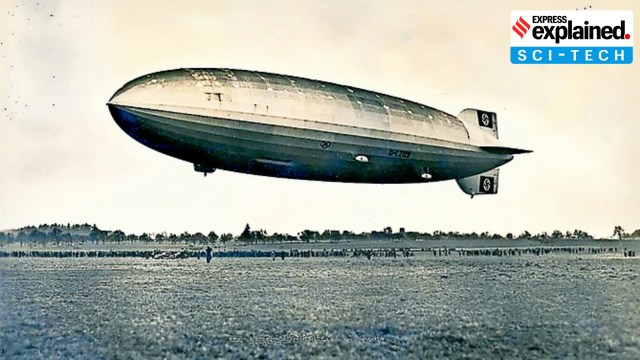How climate change is bringing back the idea of airships
Of late, a few companies are attempting to control the buoyancy of airships — a longstanding challenge that has prevented their use for cargo transportation.
 Hindenburg on its first flight on March 4, 1936. (Wikimedia Commons)
Hindenburg on its first flight on March 4, 1936. (Wikimedia Commons)Airships were the first aircraft capable of controlled powered flight and were thought to be the future of travel for some years in the early 20th century. However, fundamental technological shortcomings and the rapid development of aeroplanes killed the idea of airship transport. They see limited use today as advertising platforms, for aerial observation by scientists and militaries, and in the tourism industry.
Of late, a few companies are attempting to control the buoyancy of airships — a longstanding challenge that has prevented their use for cargo transportation.
How airships work
Airships are lighter-than-air aircraft that are lifted by gas with a density lower than atmospheric gases. This principle also operates in helium balloons.
Early airships used hydrogen as the lifting gas since it was cheap, easy to produce, and the lightest existing gas. But hydrogen was also extremely flammable. A few high-profile accidents, including the infamous Hindenburg disaster of 1937, shattered public faith in airships.
Most modern airships use helium, which is non-combustible. However, it is scarce on Earth, and thus very expensive — 1 cubic metre, the amount of gas required to lift 1 kilogram of weight, costs roughly $35.
Varying buoyancy challenge
While aeroplanes easily beat airships on speed, airships could in theory be ideal freight vehicles because of their exceptional “lift-to-drag ratio” — which means they expend far less fuel to move the same mass of material.
But to be practical cargo vehicles, they also needed to be capable of varying their buoyancy and compensating for weight changes as loads were picked up and dropped off. The simplest solution would be to release and refill the lifting gas — but cost and scarcity of helium has made this a non-starter.
Promising solutions
A seemingly straightforward solution to the problem of variable buoyancy would be to use ballast or added weights to regulate stability. This is done in hot air balloons and submarines.
The French company Flying Whales has designed a 200-metre-long “flying crane” helium airship called LCA60T. The crane can pick up water ballast while airborne, without requiring specialised ground infrastructure. CEO Sébastien Bougon told The Economist that his airship would be “practical for moving rocket sections and powerline towers; transporting logs from forests to sawmills; and carrying heavy equipment like turbine blades and prefabricated hospitals to remote areas”.
Aeros, a Los Angeles-based company that makes advertising and surveillance airships, has developed a system that could allow it to operate floating warehouses as bases for drones used in e-commerce deliveries. However, some believe that such a compression system would be too heavy to be practical.
These technologies are still years away from being commercially viable, but companies are working to to perfect them. As the world deals with the rapidly deepening climate crisis, the aviation industry has been under intense scrutiny due to its large carbon footprint. Airships are significantly less polluting than aeroplanes as they do not burn fossil fuels to achieve lift. They can also reach more places than ships or trucks.






































